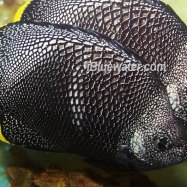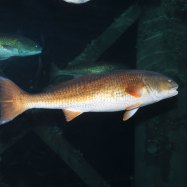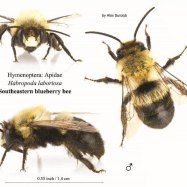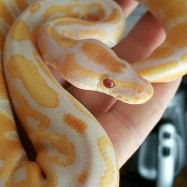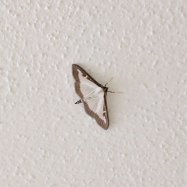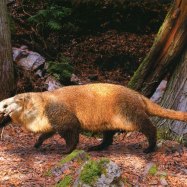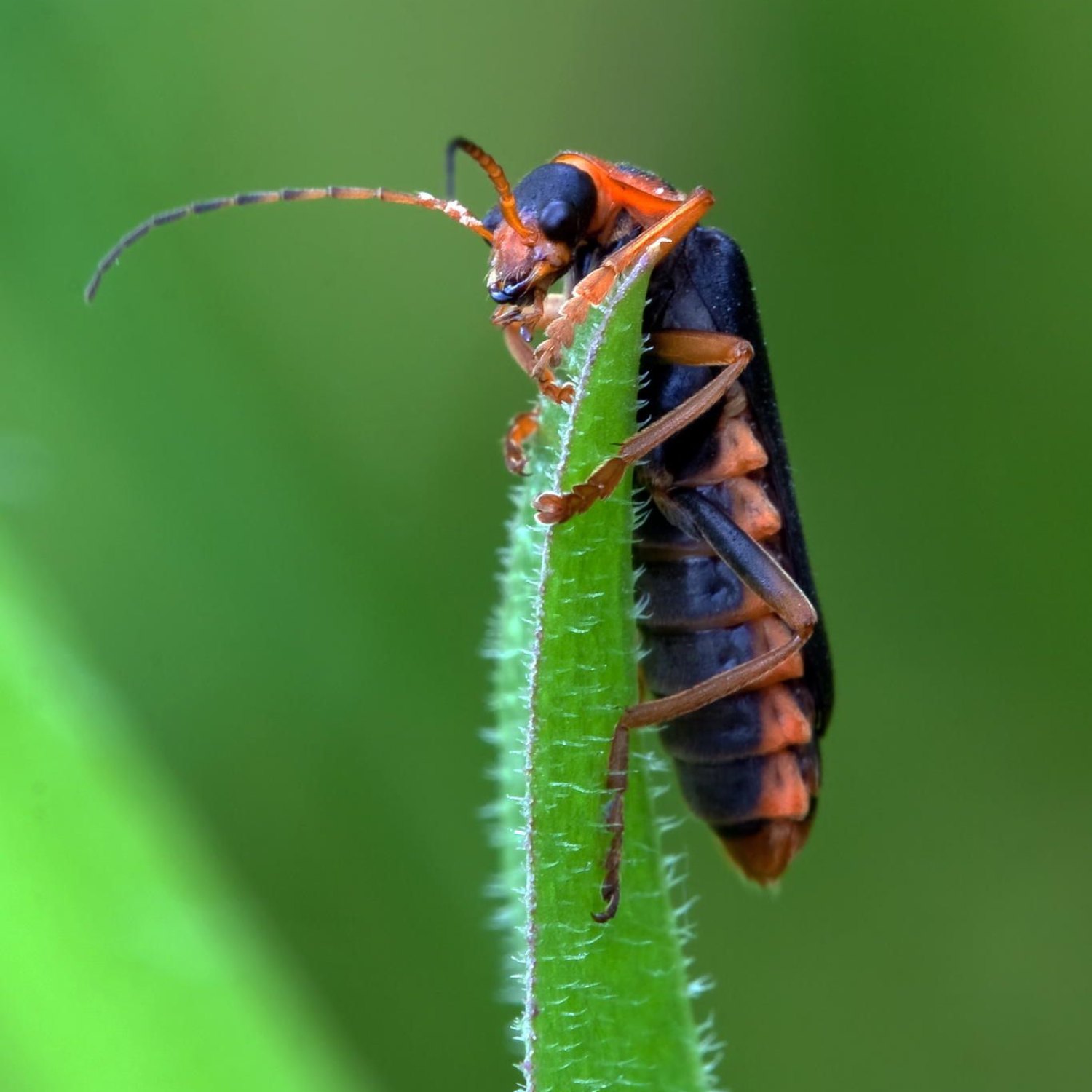
Soldier Beetle
8 to 20 mm
The Soldier Beetle, also known as Cantharidae, is a small and slender insect found in various habitats worldwide. These beneficial creatures can range from 8 to 20 mm in length and play an important role in maintaining the balance of their ecosystems. Keep an eye out for these fascinating creatures in your own backyard! #SoldierBeetle #Cantharidae #insects #biodiversity
Animal Details Summary:
Common Name: Soldier Beetle
Kingdom: Animalia
Habitat: Woodlands, meadows, gardens
The Fascinating World of Cantharis: The Soldier Beetle
Nature, with all its glory, has blessed us with a myriad of magnificent creatures, each unique in its own way. Among these fascinating creatures, the Soldier Beetle, also known by its scientific name Cantharis, stands out with its striking appearance and intriguing behavior.Soldier beetles, belonging to the Animalia kingdom, Phylum Arthropoda, Class Insecta, and Order Coleoptera, are a diverse group of predatory insects that can be found in most parts of the world. They are also known for their common name, Soldier Beetle, and are a part of the Cantharidae family Soldier Beetle.
These beautiful beetles can be found in various habitats across the globe, including woodlands, meadows, and gardens. They are not endemic to any specific country and have managed to spread their range worldwide, making them a truly fascinating species.
Their Striking Coloration
One of the most remarkable features of Soldier beetles is their bold and vibrant coloration. Usually, these insects have a bright red or orange hue with black markings on their bodies, making them stand out among the greenery.However, some species can also be black or brown in color, which serves as a protective camouflage in darker habitats. This color variation is prominent among the Cantharidae family and is thought to be due to natural selection.
The bright coloration of Soldier beetles serves more than just an aesthetic purpose. It also plays a crucial role in their survival and reproductive success. These bold colors attract potential mates and also warn predators of their toxic defense mechanism Sable German Shepherd.
Long and Slender Body Shape
Another outstanding feature of Soldier beetles is their distinctive body shape. Their elongated and slender bodies give them a sleek and graceful appearance, making them a delight to observe.Their slender bodies also serve them well in their predatory lifestyle, making them swift and agile predators. Soldier beetles are known for their quick movements, allowing them to hunt and catch their prey with ease.
Size Does Matter
While the size of Soldier beetles may vary among different species, they typically range from 8 to 20 mm in length. This size makes them a moderately sized insect, making them easy to spot in their natural habitats.Despite their relatively small size, these insects are mighty predators, capable of taking down prey almost their own size. Their size also makes them an excellent target for predators, which is where their bright coloration and toxic defense mechanism come into play.
A Predatory Diet
As mentioned earlier, Soldier beetles are predatory insects, meaning they feed on other living organisms. These beetles have a varied diet, which consists mainly of other insects, including aphids, caterpillars, and other small insects.Soldier beetles are also known to feed on pollen, making them pollinators, and serving a vital role in the ecosystem. As adults, they can be seen feeding on the nectar of flowers, making them essential in the pollination process.
With their predatory behavior and varied diet, Soldier beetles play a crucial role in maintaining the balance of insect populations in their habitats.
Adaptations for Survival
As with any species, the primary goal of Soldier beetles is to survive and ensure the continuation of their species. These remarkable insects have various adaptations that aid them in this endeavor, making them truly remarkable creatures.One of the most notable adaptations of Soldier beetles is their fast and agile movements. Their slender bodies and long legs make them swift runners, allowing them to chase down their prey and escape potential predators.
Moreover, their bright coloration serves as an important defense mechanism against predators. Soldier beetles contain a toxin called cantharidin, which is released from their leg joints when threatened. This toxin is highly toxic to predators, making them think twice before attacking these vibrant beetles.
Another fascinating adaptation of Soldier beetles is their ability to fly. These insects have a pair of wings, which they use for quick escapes and long-distance travel to various habitats. They also have excellent vision, which helps them navigate and locate potential prey.
Their Global Distribution
As mentioned earlier, Soldier beetles have a worldwide distribution, making them a highly adaptable and successful species. These beetles can be found in almost every continent, except Antarctica, and have managed to thrive in various habitats.Their adaptability and wide range have made them a part of many ecosystems, playing a crucial role in maintaining balance and biodiversity.
Exploring the World of Soldier Beetles
Now that we have gotten to know this remarkable insect a little better, let's take a closer look at their behavior and lifestyle. As previously mentioned, Soldier beetles are predators, and their diet mainly consists of other insects, making them a valuable part of the food chain.These beetles are primarily active during the day, making them diurnal insects, and can be seen primarily on plants and flowers. They can also be found on tree barks, bushes, and even on the ground, as they search for potential prey.
Soldier beetles are also known to be social insects, and can often be seen in groups or clusters, especially during mating season. Male Soldier beetles are known for their competitive behavior during mating, often fighting for the right to mate with a female.
The Miracle of Metamorphosis
Like most insects, Soldier beetles undergo a process of metamorphosis, starting as eggs and transforming into larvae, pupae, and finally, adults. The eggs are laid on the underside of leaves, and once hatched, the larvae feed on plant material and small insects.After a series of molting, the larvae go through a pupal stage before emerging as adult Soldier beetles. The entire process can take anywhere from a few weeks to a year, depending on the species and environmental factors.
Significance in Agriculture
Soldier beetles are not only fascinating creatures but also serve an important role in agriculture. These insects are known to feed on various plant pests, making them important natural pest control agents.Their predatory behavior helps to keep the populations of plant pests in check, reducing the need for chemical pesticides, which can harm the environment. Therefore, the presence of Soldier beetles in agricultural landscapes can be highly beneficial for crop production.
The Future of Soldier Beetles
Despite their remarkable adaptations and widespread distribution, Soldier beetles, like many other insects, are facing threats to their survival. Habitat loss due to human activities, such as deforestation and urban development, is one of the major threats to this species.Moreover, the use of pesticides and insecticides in agriculture also poses a risk to the survival of Soldier beetles. These chemicals not only kill their target pests but also affect non-target insects, such as Soldier beetles, which play a vital role in maintaining ecological balance.
As we continue to learn more about these magnificent insects, it is our responsibility to protect their habitats and preserve their natural populations. By doing so, we not only ensure their survival but also contribute to the preservation of biodiversity on our planet.
In Conclusion
In the world of insects, Soldier beetles stand out as a remarkable and fascinating species. With their striking coloration, slender bodies, and predatory behavior, these beetles have managed to spread their range worldwide and become a vital part of many ecosystems.Their remarkable adaptations, including their toxic defense mechanism, swift movements, and ability to fly, make them truly remarkable creatures. As we continue to learn more about these insects, it is crucial to protect their habitats and help preserve their populations for generations to come.

Soldier Beetle
Animal Details Soldier Beetle - Scientific Name: Cantharis
- Category: Animals S
- Scientific Name: Cantharis
- Common Name: Soldier Beetle
- Kingdom: Animalia
- Phylum: Arthropoda
- Class: Insecta
- Order: Coleoptera
- Family: Cantharidae
- Habitat: Woodlands, meadows, gardens
- Feeding Method: Predatory
- Geographical Distribution: Most parts of the world
- Country of Origin: No specific country as it is found worldwide
- Location: Various habitats across the globe
- Animal Coloration: Usually bright red or orange with black markings, but can also be black or brown
- Body Shape: Long and slender
- Length: 8 to 20 mm
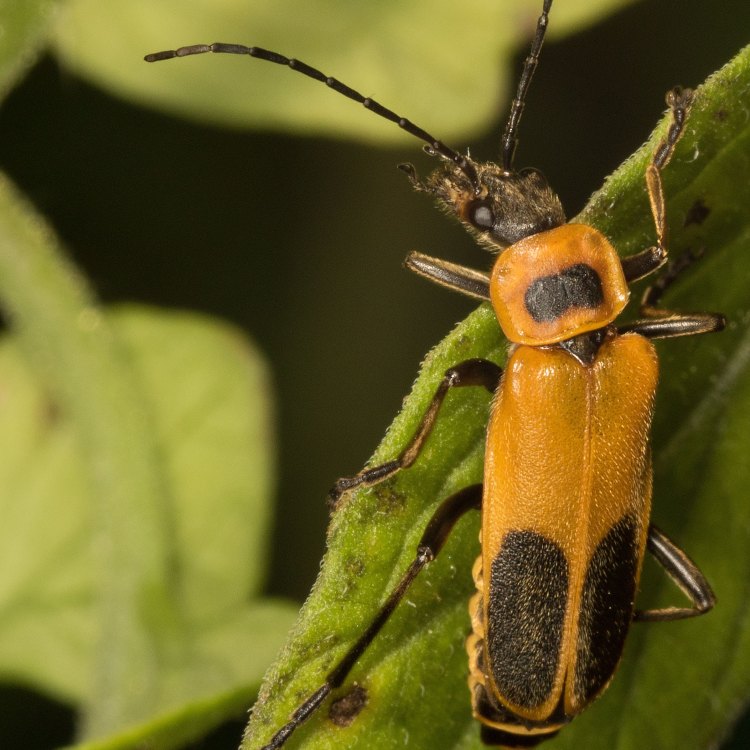
Soldier Beetle
- Adult Size: Small to medium-sized insect
- Average Lifespan: 1 to 3 years
- Reproduction: Sexual
- Reproductive Behavior: Mating occurs in the summer
- Sound or Call: No specific sound or call
- Migration Pattern: Non-migratory
- Social Groups: Solitary or in small groups
- Behavior: Active during the day (diurnal)
- Threats: Predation, habitat loss, pesticide use
- Conservation Status: Not a threatened species
- Impact on Ecosystem: Pollinators, predators of garden pests
- Human Use: No significant human use
- Distinctive Features: Bright coloration, long antennae, soft-bodied
- Interesting Facts: Soldier beetles are beneficial insects that help control populations of aphids, caterpillars, and other garden pests.
- Predator: Birds, reptiles, amphibians
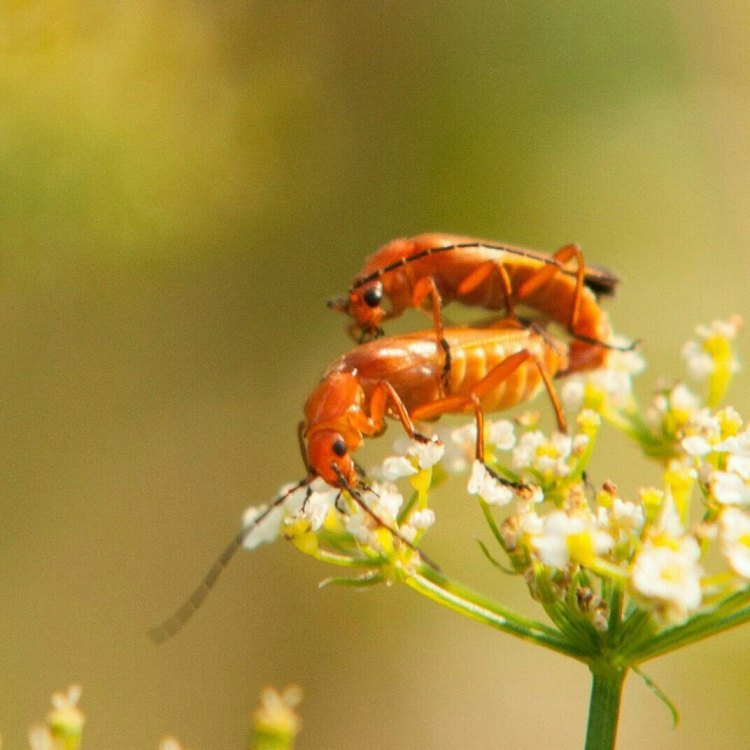
Cantharis
The Fascinating World of Soldier Beetles: Small Guardians of Our Gardens and Ecosystems
In the world of insects, there are many fascinating creatures that play crucial roles in maintaining the balance of our ecosystems. One insect that often goes unnoticed, but holds great importance, is the soldier beetle.Soldier beetles belong to the Cantharidae family, which is derived from the Greek word "kantharos," meaning "cup." These small to medium-sized insects can be found all across the globe, except in Antarctica PeaceOfAnimals.Com. They have a distinct appearance with their bright coloration and long antennae, making them stand out among other insects. In this article, we will delve into the unique features and importance of these tiny guardians of our gardens and ecosystems.
The Physical Characteristics of Soldier Beetles
Soldier beetles, also known as leatherwings, are small to medium-sized insects, ranging from 0.5 to 1.5 centimeters in length. They have soft-bodied elongated bodies with a flattened shape, giving them a slender and delicate appearance. They are often found in bright shades of orange, red, and yellow, but can also be seen in darker shades of brown and black.The most distinctive feature of these beetles is their long segmented antennae, which can be as long as their bodies. These antennae are highly sensitive and help the beetles in detecting their prey and potential mates Sapsali. Soldier beetles also have two pairs of wings, with the outer pair known as elytra, providing them protection while flying.
The Lifecycle of Soldier Beetles
The average lifespan of a soldier beetle is about 1 to 3 years, depending on the species and environmental conditions. Soldier beetles undergo a complete metamorphosis, with four distinct stages in their lifecycle – egg, larva, pupa, and adult. The eggs are laid in clusters on leaves, flowers, or under the bark of trees. The larvae hatch in about 7-10 days and have a worm-like appearance with a white or cream-colored body and a small black head.For soldiers beetles, reproduction is sexual, with males and females coming together during mating season in the summer. They are often seen in pairs, with the male clinging onto the female's back. The females can lay up to 150-300 eggs in her lifetime, which they carefully deposit in soil or near vegetation.
Behavior and Social Groups of Soldier Beetles
Soldier beetles are diurnal, which means they are active during the day and rest at night. They have a solitary nature and are often found alone, but they can also be seen in small groups, especially during mating season.These beetles are often spotted in open fields, flowers, or gardens, where they search for food. They are excellent flyers and can travel great distances in search of food and potential mates. Soldier beetles are territorial and defend their territory by attacking other insects that come too close.
The Role of Soldier Beetles in Our Ecosystems
One of the most critical roles of soldier beetles in our ecosystems is pollination. They are attracted to flowers for their nectar and pollen, and in turn, help in the process of pollination. They are also important predators of garden pests, such as aphids, caterpillars, and mites, helping to maintain the balance of our gardens and crops.Soldier beetles are also a crucial food source for many other animals, such as birds, reptiles, and amphibians. This makes them a vital part of the food chain, ensuring a steady supply of food for larger animals.
Threats to Soldier Beetles and Their Conservation Status
As with many other insects, soldier beetles face threats to their survival, primarily due to human activities. The use of pesticides and insecticides in agriculture and gardens greatly impacts their population. These chemicals not only kill the harmful pests but also the beneficial insects, such as soldier beetles.Habitat loss is another major threat faced by soldier beetles. With the increasing urbanization and development of land, these insects lose their natural habitats, making it challenging for them to find food and shelter. As a result, their populations decline, and some species may even face the risk of extinction.
Despite these threats, soldier beetles are not considered a threatened species. However, it is crucial to protect and preserve their habitats to ensure their survival and maintain the balance of our ecosystems.
Interesting Facts About Soldier Beetles
1. Soldier beetles are also known as leatherwings due to the texture of their outer wings, which resembles soft leather.2. In addition to their bright coloration, soldier beetles also emit a foul-smelling defensive chemical to deter predators.
3. Some species of soldier beetles are known to swarm in large numbers, creating beautiful but fleeting displays in nature.
4. During the winter, soldier beetles hibernate in leaf litter, under bark, or in the soil until spring arrives.
Final Thoughts
In conclusion, soldier beetles may be small and often go unnoticed, but they play a crucial role in our ecosystems. They are not only pollinators but also beneficial predators that help control pest populations in our gardens and crops. It is essential to protect and preserve their habitats, not only for their survival but also for the overall health of our ecosystems. So, next time you spot a soldier beetle in your garden, take a moment to appreciate their importance and the role they play in maintaining the balance of our ecosystems.
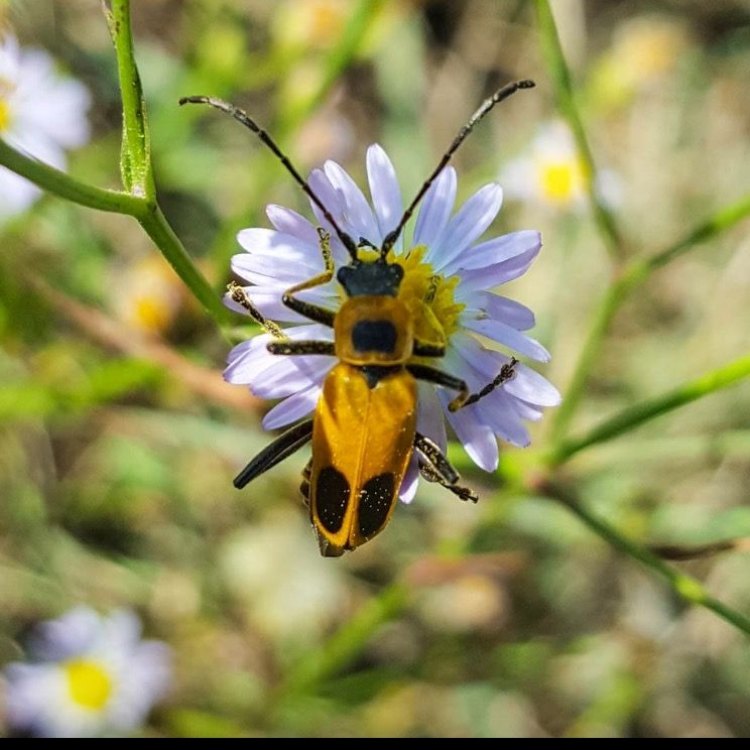
The Fascinating World of Cantharis: The Soldier Beetle
Disclaimer: The content provided is for informational purposes only. We cannot guarantee the accuracy of the information on this page 100%. All information provided here may change without prior notice.



